February is American Heart Month, which brings awareness to heart disease, the leading cause of death in the United States. The University of Minnesota has a long history of researching, diagnosing, and treating diseases of the heart. In the promotion of heart health, let’s take a look back at a few moments in the University’s heart history…
In the 1940s, Ancel Keys devoted his research to the physiology and prevention of cardiovascular diseases.
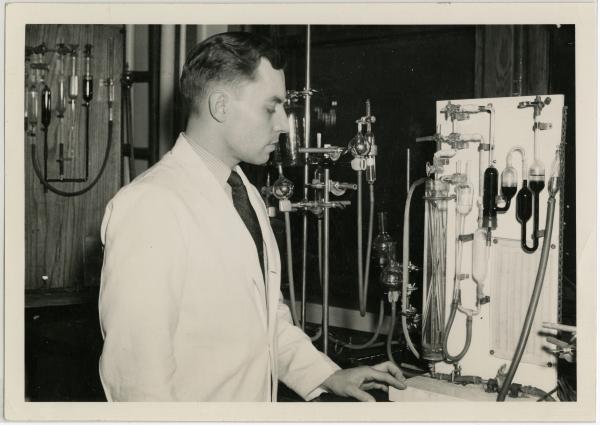
Ancel Keys in the Laboratory of Physiological Hygiene, 1938. Available at http://purl.umn.edu/218523.
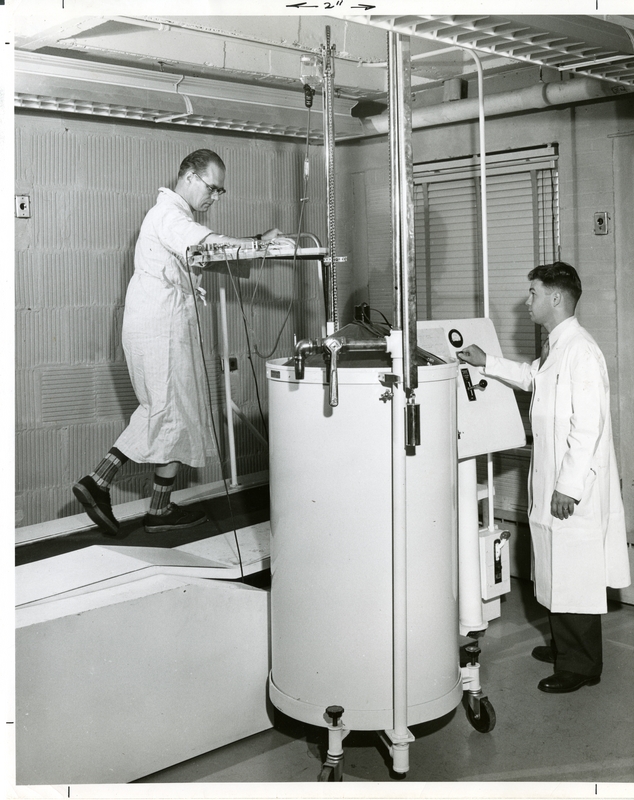
Laboratory of Physiological Hygiene Heart Research, undated. Available at http://brickhouse.lib.umn.edu/items/show/348.
In the late 1940s, research on open heart surgery became a prime focus of members of the Department of Surgery in the Medical School. Open Heart: Intracardiac Surgery at the University of Minnesota, an online exhibit, highlights the role that the University had in advancing the field of open heart surgery.
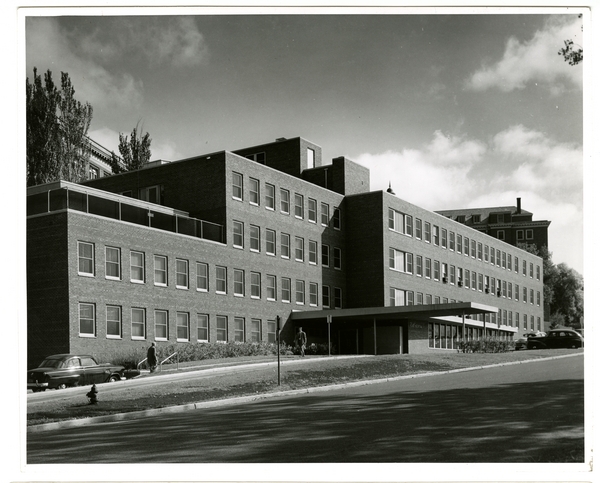
Variety Club Heart Hospital, 1955. Available at http://purl.umn.edu/81123.
The Variety Club Heart Hospital, the first hospital in the nation that focused solely on the treatment and prevention of diseases of the heart, opened at the University on March 20, 1951.
On September 2, 1952, F. John Lewis, Mansur Taufic, Richard Varco, and C. Walton Lillehei performed the world’s first successful open heart surgery under direct vision in a dry operating field by use of induced hypothermia to repair an atrial septal defect.

Richard Varco and F. John Lewis with cooling equipment, 1952. Available at http://purl.umn.edu/81409.
On March 26, 1954, Drs. Lillehei, Varco, Herbert Warden, and Morley Cohen first successfully used the method of controlled cross-circulation (connecting a patient to a donor who provided the function of oxygenating blood for the patient) to correct an even more complicated form of heart defect – a ventricular septal defect.

Dr. C. Walton Lillehei, 1955. Available at http://purl.umn.edu/80946.
While performing multiple operations a week using controlled cross-circulation, the researchers pursued the development of a heart and lung machine to replace the donor as an oxygenator. On May 13, 1955, the DeWall Bubble Oxygenator was first used during an open heart surgery.
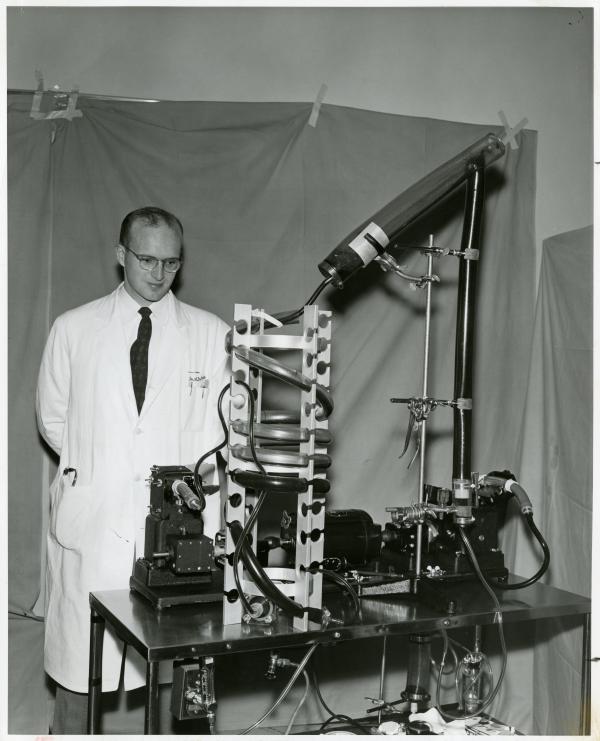
Richard Allison DeWall, undated. Available at http://purl.umn.edu/215542.
Some patients that underwent open heart surgery later developed a condition known as “heart block” which disrupts the impulse that pumps blood through the body. Dr. Lillehei asked Earl Bakken, an electrician who maintained and repaired operating room equipment, to create a device that would provide the needed electrical stimulus to pace the heart at a normal rhythm. In December of 1957, Bakken produced a device — the pacemaker — that successfully treated heart block.
Learn more
These moments only begin to share the story of the University’s heart history. Visit the online exhibit, Open Heart: Intracardiac Surgery at the University of Minnesota for more photographs, reports, medical illustrations, etc., and visit the Lillehei Heart Institute website to learn about current advances in heart health being developed and discovered by researchers at the University of Minnesota.
—Rebecca Toov is a project archivist for the University of Minnesota Archives. To learn more about the University of Minnesota Archives, please visit www.lib.umn.edu/uarchives.


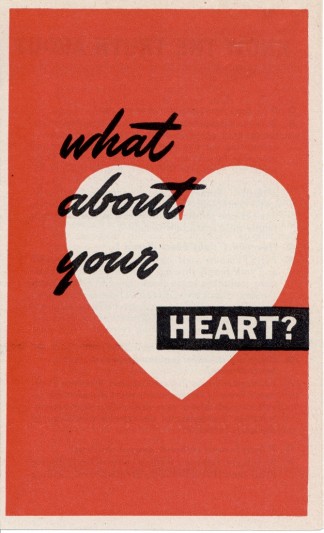
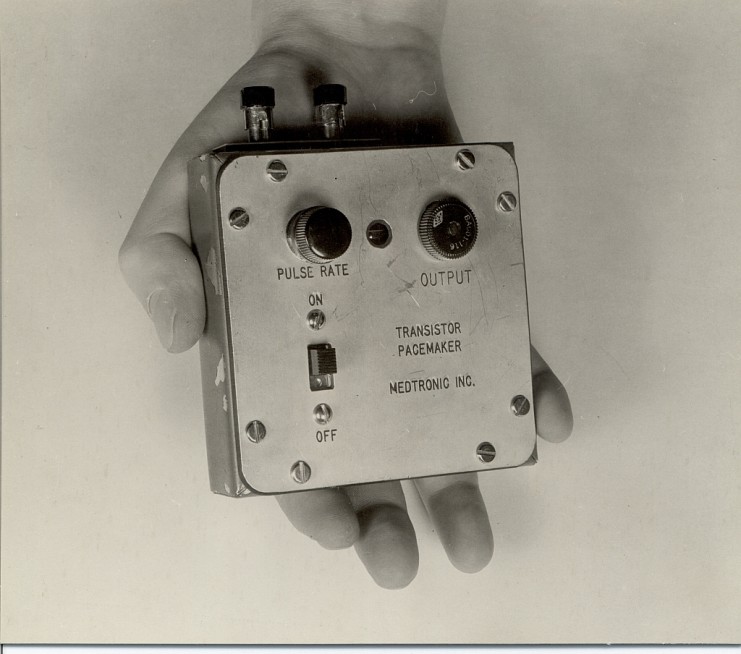
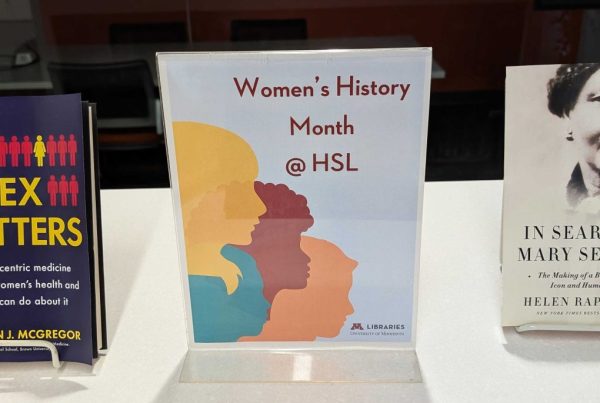
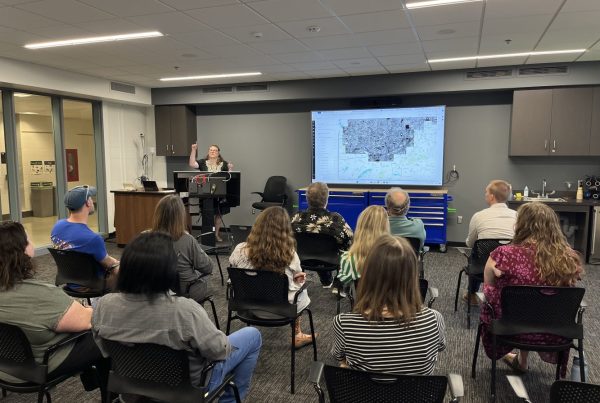

Great inventions done by The University of Minnesota to preserving heart. I love your article, because i want to know all history of UMN.